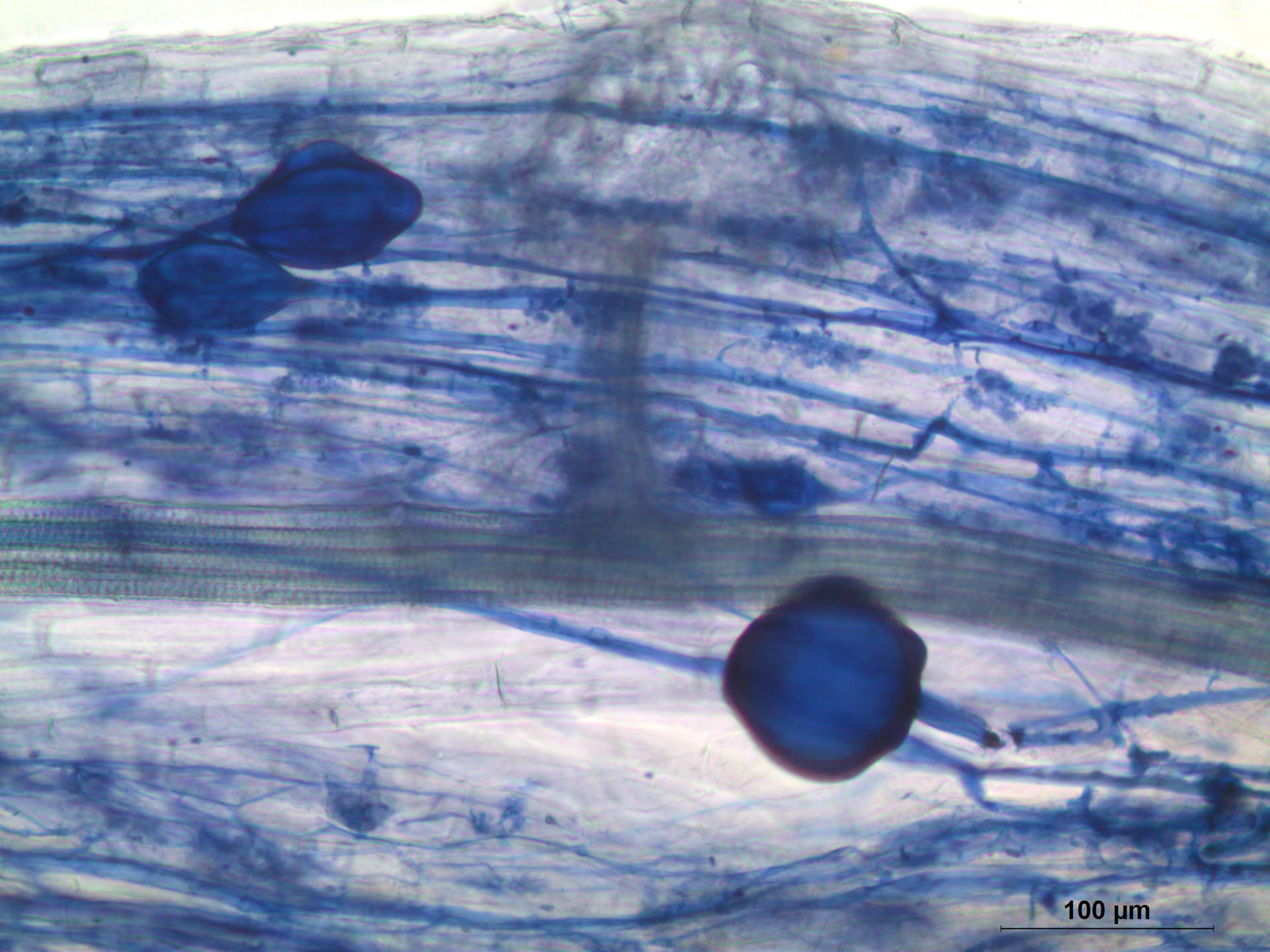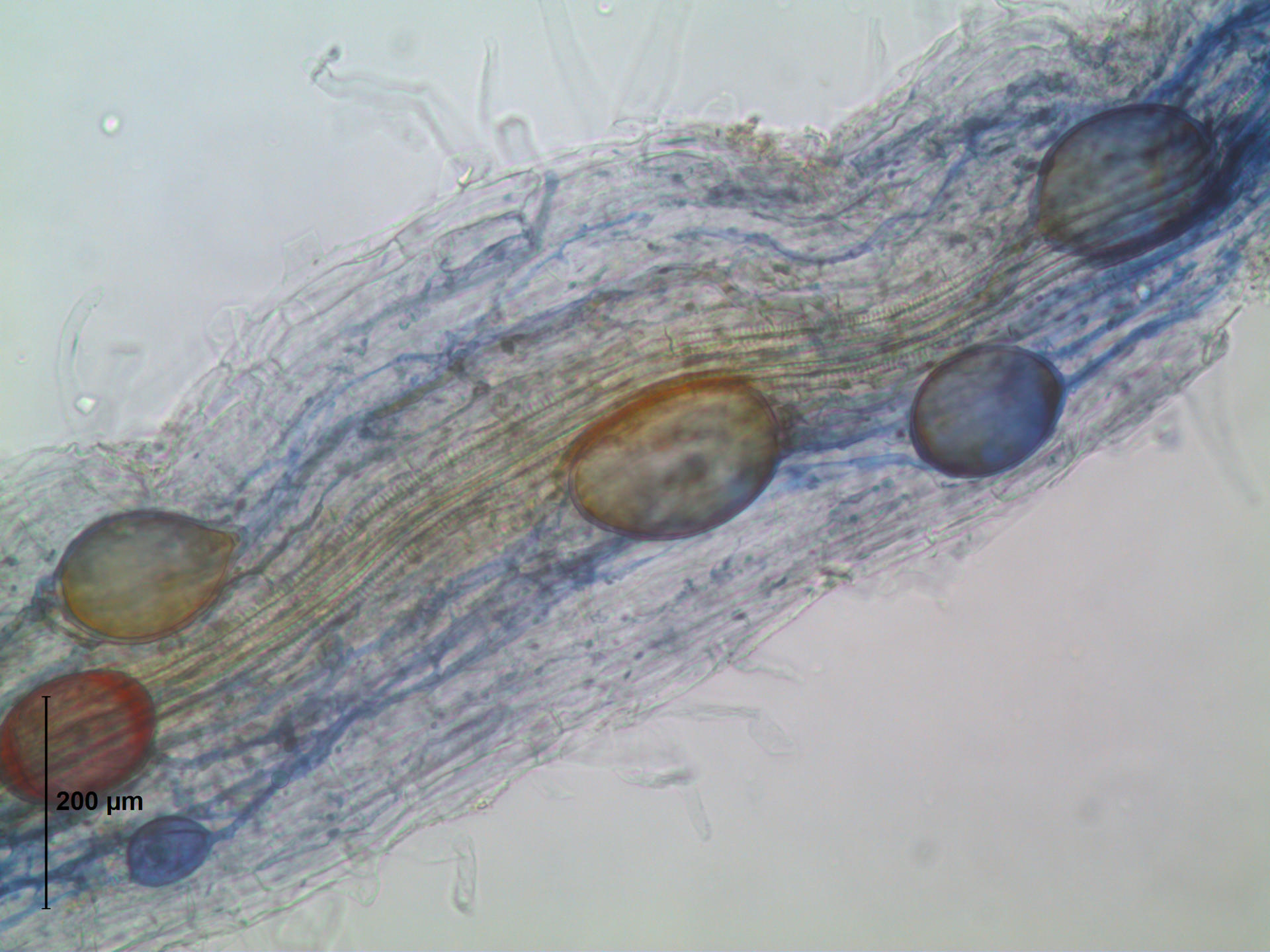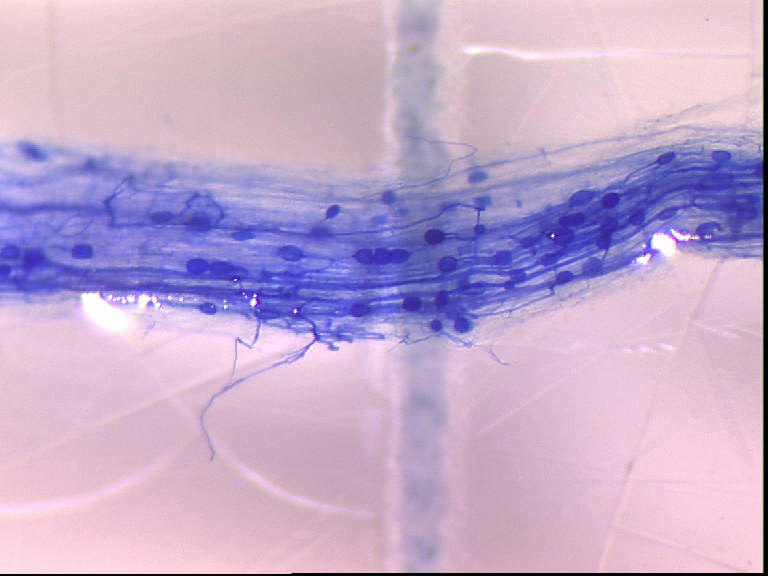Blog Not all about diversity: what drives the invisible root-microbiome?

Researchers delve into the complex relationship between agriculture and soil mycorrhizal fungi, which is subject to an ongoing study.
By Francesca Beggi and Debarshi Dasgupta
Recent discoveries are demonstrating that several diseases, including cancer and autoimmune disorders, are influenced by processes in the human gut microbiome. Like humans, plants act as hosts to a staggering amount of microbial diversity inside and around their bodies, known as the microbiome. The root-associated microbiome was instrumental in the evolution of plants and it underlies the health of soil and ecosystems.

Image of AMF hyphae infecting plant roots. Credit: Erik Verbruggen
Assessing agriculture’s impact on soil fungi
A keystone component of root microbiome is the Arbuscular Mycorrhizal Fungi (AMF) (see previous blog) which are present in almost all kinds of soils in the world. Their abundance is generally considered to be an indicator of plant resilience to environmental and anthropogenic stresses. There is growing evidence that agricultural intensification reduces AMF abundance, diversity and network complexity, whereas organic and conservation agriculture supports AMF and greater ecological resilience. However, current knowledge mainly stems from primary studies in temperate countries or from artificial setups, like greenhouses or bio-inoculation experiments.
To that end, a joint team of researchers from the Alliance of Bioversity International and CIAT, the Plant and Soil Laboratory of University of Antwerp, and the Artificial Intelligence for Smart Agriculture Unit at Leibniz-Centre for Agricultural Landscape Research (ZALF) synthesized nearly one thousand primary studies from around the world in order to assess the comparative effect of different agricultural practices (including use of fertilisers, types of cropping system, tillage, cover crops, etc.), soil and climatic factors on AMF abundance as found in roots of crops grown in field conditions.
What we have found so far: influencing factors
Preliminary results indicate that the major influencing factors of AMF abundance worldwide are the application of phosphorus fertiliser, the predominance of mono-cropping, temperature and soil pH. This means that a tiny application of phosphorus-based fertiliser such as the widely used DAP (diammonium phosphate) can cause an exponential drop in AMF abundance, and the negative trend is also associated with decreasing mean annual temperature and soil pH. On the other hand, it seems that a more conventional cropping approach - maintaining one type of crop instead of diversifying the choice – favours AMF abundance. In addition, there is evidence that agroecological practices such as the application of organic instead of inorganic fertilisers, the inclusion of legumes and drought tolerant plants in crop rotation and a low tillage intensity all contribute to increased AMF abundance.
The way farmers choose crops may therefore be crucial for mycorrhizal symbiosis. If increasing diversity of crops over time and space seems to increase belowground biodiversity, the contrary might stimulate AMF abundance: in less diverse fields, AMF can evolve cooperative adaptive traits aimed at faster colonization.

Image of AMF hyphae infecting plant roots. Credit: Erik Verbruggen
Understanding the relationship between agrobiodiversity and mycorrhizal fungi
Yes, you read that right: AMF seem to flourish when they have a single crop to colonise, i.e., monocultures might actually encourage these underground organisms. But why: is it due to legacy effects in the soil or to a degeneration from the well known mycorrhizal mutualism into a form of parasitism? We must bear in mind that symbioses can manifest as mutualism, commensalism, or parasitism depending on the biotic and abiotic conditions of the cropping conditions. There seems to be some truth to Frederick Lenz’s quote ‘symbiosis is a much higher reflection of intelligent life’, because there is more to mycorrhiza than what meets the eye.
Current agroecological approaches point towards mainstreaming biodiversity and harnessing the full potential of natural processes, enabling reduction of synthetic inputs to support soil health while ensuring food for a growing population. Our results so far speak to this, except for the role of crop diversity which is typically considered as fostering soil biodiversity. This should not be taken as obvious in agroecological discussions: further research is needed to understand the relationship between agrobiodiversity and AMF abundance. Crop diversification might generally increase productivity and resource-use efficiency, but the complex effects of such diversity on symbiotic interactions in the invisible root-microbiome are far from clear. Our study hopes to unearth answers that can clarify the complex plant-root-microbiome relationship, and generate comprehensive quantitative insights for researchers, practitioners and development agencies in the area of agroecology.
This blog reflects an ongoing study. The results will be available in the coming months.
This research is conducted thanks to the financial support of German Federal Ministry for Economic Cooperation and Development (BMZ), commissioned by the Deutsche Gesellschaft für Internationale Zusammenarbeit (GIZ) through the Fund International Agricultural Research (FIA), CGIAR Research Program on Water, Land and Ecosystems (WLE) and Indian Council for Agricultural Research (ICAR).
